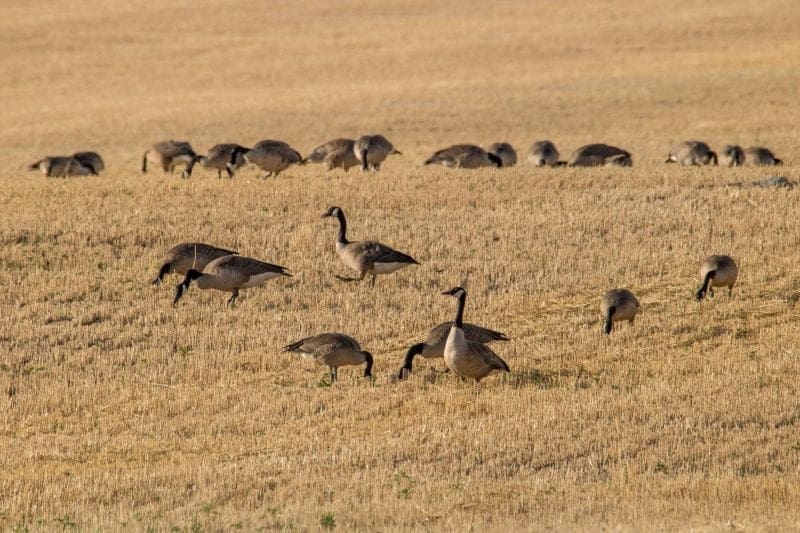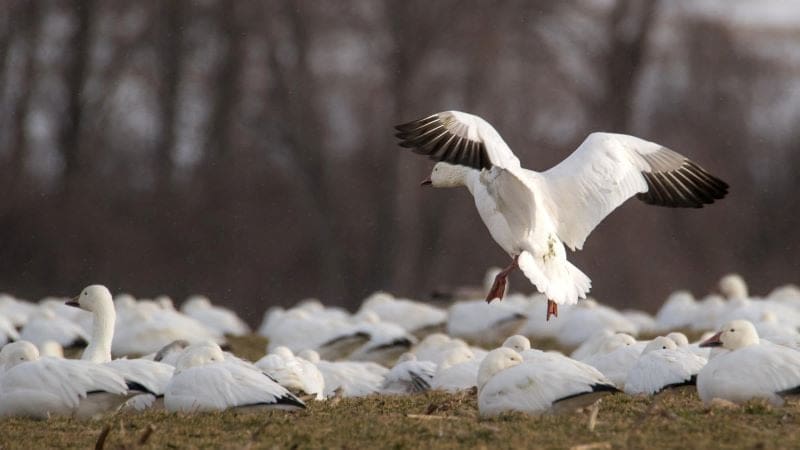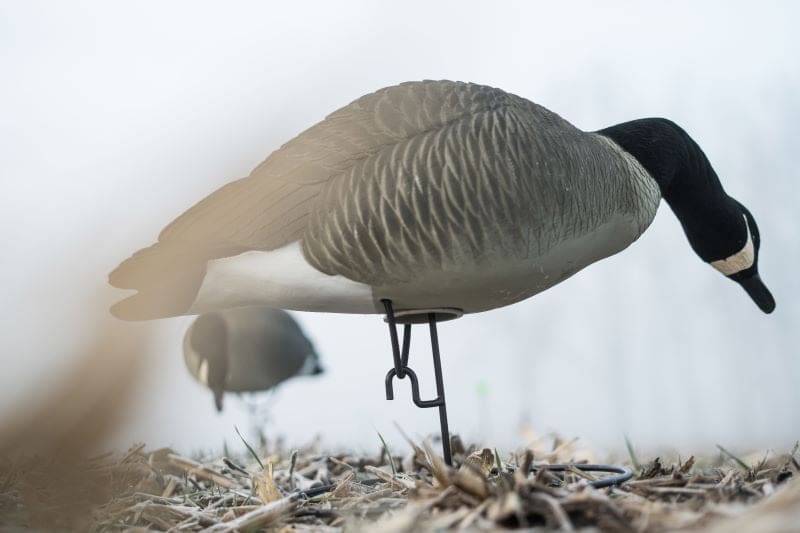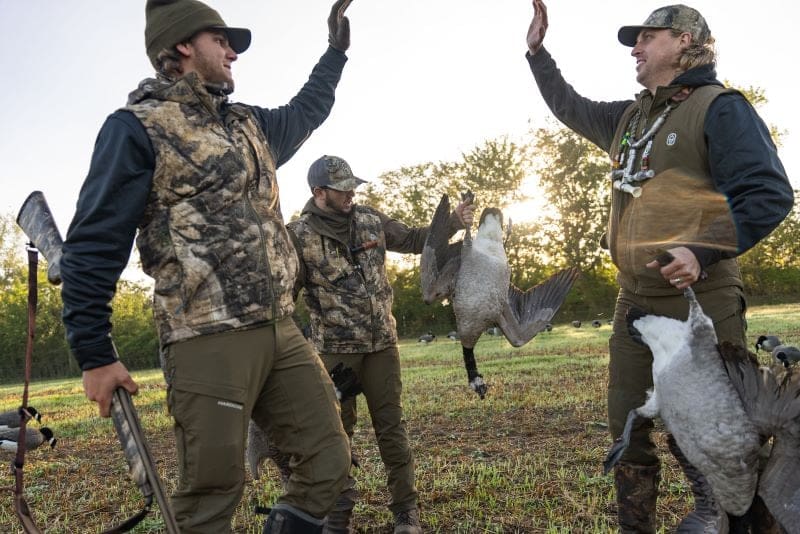Goose scouting and hunt planning tips and tactics to put the odds in your favor.
Elite waterfowl hunters will tell you the foundation of their distinguished accomplishments in the marshes and fields begins with scouting – period. Pinning down good intel on a potential hunting spot requires a level of awareness that for whatever reason, some hunters ignore. Contrary to the oft-repeated adage “you can’t predict what the birds will do”, you can do a pretty good job of it, and frankly it isn’t rocket science. Factors such as weather, wind, moon phase, hunting pressure, alternate food sources, and the availability of a “hide” – among other things, are important considerations when it comes to planning a hunt, and ultimately setting the hunt into motion.
Good scouting isn’t just a matter of “taking a look” or having a buddy drive by a spot on his way to work to see if the birds are there. Determining what the situation is with any level of certainty requires better intel, which should include observing broader patterns within a given area and doing it at varying times of day and in any type of weather to narrow down hunt timing.

The basic premise is simple: “The most important thing I’d say is find where the birds are roosting and hang back and follow them to the feed, then make sure you have permission.” Said Hardcore Waterfowl Central Flyway Manager, Jason Summers. “Take note of where the are birds in the field, weather and what time they hit the field, and figure out where the best hide is and where the birds want to be.”
In essence, this may seem an easy task, but as Summers alluded to, timing and weather are really important when planning. Just because geese were using a field all week at five o’clock in the afternoon on bright sunny days doesn’t mean they’ll be there at five on Saturday when rain or snow develops overnight, because chances are they’ll hit that field not long after legal time in the morning.
Similarly, if geese were in a field all week at nine o’clock in the morning with clouds and spitting snow, does not guarantee geese will be there when post-frontal high pressure shifts in Friday night, and Saturday morning is cold and frosty. In fact, savvy goose hunters know on days like this the birds will often go “water to water” and skip the field in the morning altogether. Sure, you may be able to pull some traffic or confuse a flock or two into checking your spread, but it’ll be hard to finish anything because your spot simply isn’t their destination. To makes matters worse, if there are other flocks ignoring you as they “daisy chain” to their morning loaf, it’s nearly impossible to pull anything off the flight line.
Picking the best time to hunt (or not hunt) is all part of the scouting and planning process.

Know the weather and fine-tune the plan: Understand the weather and how it’s going to affect the birds. This applies to waterfowl on the water and birds on land,” said Hardcore pro-staffer Matt Ward of northwest Illinois. “Example…you find a feed (field) four miles from the roost. The next day, the wind is forecasted to blow 30 miles per hour. Those birds are not likely going to fly into a 30mph headwind to feed. Usually, they’ll stop short or feed in a different area where they don’t have to fight that wind to and from the feed areas. Be prepared to wait a day or two for the weather to get right.”
Ward continued, “Another example would be honkers in a cut cornfield. You see the temps are supposed to be warm, then a cold front is coming. Wait to hunt that feed when the cold front hits. Those geese will be hungrier due to needing more calories.”
Once the stage is set, it’s time to dig a little deeper and refine your approach: “We pay attention to the finer details of how the flock is behaving on the ground and I think one of the most important parts of scouting is knowing where the birds want to land, not just where they are when you see them,” explained Hardcore Pacific Flyway Manager, Scott Roduner. “For example, the specks in this area prefer to land in shorter stubble and then walk into the taller stubble. When we set the kill hole, we always try to find the cleanest ground with short stubble and load the decoys into that taller stuff.”
“Finishing birds feet down is always the priority. The kill hole might not be where the actual “X” is, but if they’re landing on the shorter stuff in the field and then moving into the surrounding taller stubble, you’re going to be set up exactly where they want to be when they land,” Roduner adds.
Other things to consider: How many geese are there and are they coming from multiple directions? What are the primary goose species and if multiple species are present, are they mixing on the ground? Are there ducks feeding with the geese? If so, it’s a good idea to add duck decoys to the spread for realism, as well as the appropriate ratios of the different goose species if necessary.

Scouting is a discipline that requires years to hone and waterfowl hunters who are good at it are often the linchpin for a given “crew” of hunters. Knowing your territory and having a good rapport with prominent landowners, and some semblance of knowledge and ideally a friendly relationship with other crews is a big plus.
There are other basic things that will make the transition from scouting apprentice to journeyman a heckuva lot easier. Consider these suggestions, but you’d be hard-pressed to find a pro-scouter who doesn’t use these assets just about every time they’re out spinning the wheels.
Binoculars: Sure, any old binos will work, but ideally, they should have decent glass with higher magnification, and a bigger objective to allow more light in, which makes it easier to see birds in low light conditions. 12x50s work great. Window mounted spotting scopes are very popular as well, especially in open country.

Mapping: Good old Gazetteers, Google Maps and GPS help with basic navigation and the lay of the land, but having landowner details at your fingertips is an incredible asset. The On-X app offers a highly valuable suite of features for a fair price. Additionally, some counties can be found on Beacon while others require proprietary GIS access. Keep in mind there is an ever-changing cast of landowners – never make assumptions.
Rangefinders: They are handy to estimate distances and locate the X, as well as how far the best hide is from the landing zone when cover is limited. This will help determine what type of blind is used, or if the spot is even feasible to hunt. Incidentally, there are good binoculars available that also feature range finding capability.
There is nothing worse than chasing geese across the countryside and realizing you need fuel for the rig and must suspend the pursuit. Make it a point to have plenty of fuel in the tank and maybe some snacks and a beverage to slake the thirst so common during intense scouting missions.

If you are hunting a given area regularly, learn the detailed ins and outs. This includes human intel such as which farmers are friendly. It’s common for anxious hunters to get caught up on hot feeds, despite the fact they have zero chance of ever hunting a given spot. Whether it’s leased, or off-limits, determine if you can “get under” the flight line for a traffic hunt, or move on in search for other options.
Coordinate with others in your crew who are also scouting, so nobody wastes time looking at the same spots during prime flight and feeding periods. This is a common mistake that squanders valuable time for gaining more intel. This also allows you to share info and look at other options.
Finally, put your spots “to bed”. Meaning, watch it until the birds leave prior to the hunt to make sure nothing happens to botch-up the plan. This includes ridiculous but borderline comical things such as the landowner’s best friend’s, uncle’s, brother-in-law’s dentist coming in at the last second to get permission. Until there are geese belly up in your spread, consider everything theoretical.


